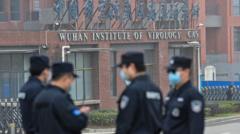As the COVID-19 pandemic exposed critical shortcomings in healthcare systems, a new report highlights a severe lack of medical oxygen across the globe. Published on February 17, 2025, by a panel of experts in The Lancet Global Health, the report states that over 370 million individuals require oxygen for various medical needs each year, but fewer than 1 in 3 actually have access to it.
This shortage has lethal consequences: as witnessed during the height of the pandemic, many lives were lost simply due to an inability to breathe, particularly in low and middle-income countries where the crisis is most acute. Dr. Hamish Graham, a pediatrician and lead author of the report, underlined the urgency of this issue, predicting more epidemics, including another pandemic, will emerge in the next 15 to 20 years.
Compounding the problem, recent funding cuts by the Trump administration have interrupted foreign aid programs that could have improved oxygen accessibility in vulnerable regions. Experts estimate that addressing this medical oxygen shortfall could require investments of approximately $6.8 billion. Carina King, an infectious disease epidemiologist at the Karolinska Institute and co-author of the report, calls for governments and funding organizations to prioritize this critical element of healthcare access.
Medical oxygen is crucial not only for respiratory conditions like pneumonia but also for treating severe infections such as malaria and sepsis, for surgical procedures, and for managing chronic lung issues. Without a concerted effort to improve the supply of medical oxygen, the health outcomes of countless individuals around the globe will remain at risk.
This shortage has lethal consequences: as witnessed during the height of the pandemic, many lives were lost simply due to an inability to breathe, particularly in low and middle-income countries where the crisis is most acute. Dr. Hamish Graham, a pediatrician and lead author of the report, underlined the urgency of this issue, predicting more epidemics, including another pandemic, will emerge in the next 15 to 20 years.
Compounding the problem, recent funding cuts by the Trump administration have interrupted foreign aid programs that could have improved oxygen accessibility in vulnerable regions. Experts estimate that addressing this medical oxygen shortfall could require investments of approximately $6.8 billion. Carina King, an infectious disease epidemiologist at the Karolinska Institute and co-author of the report, calls for governments and funding organizations to prioritize this critical element of healthcare access.
Medical oxygen is crucial not only for respiratory conditions like pneumonia but also for treating severe infections such as malaria and sepsis, for surgical procedures, and for managing chronic lung issues. Without a concerted effort to improve the supply of medical oxygen, the health outcomes of countless individuals around the globe will remain at risk.






















